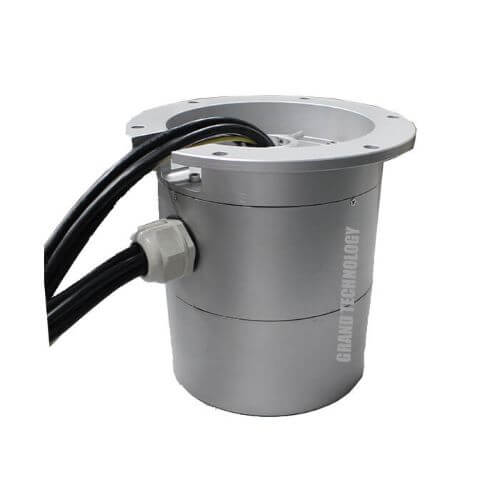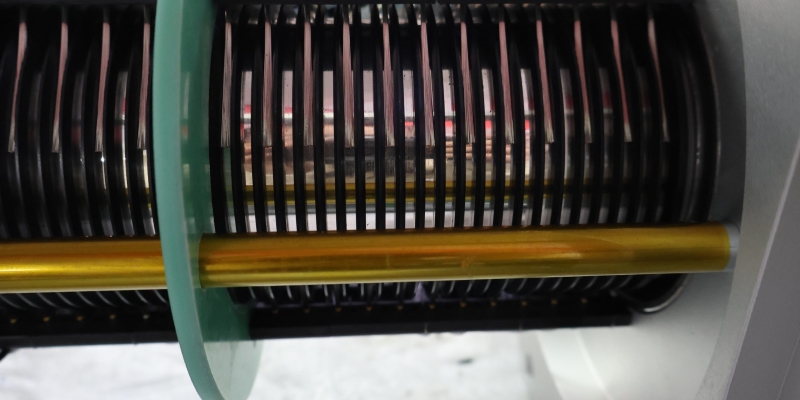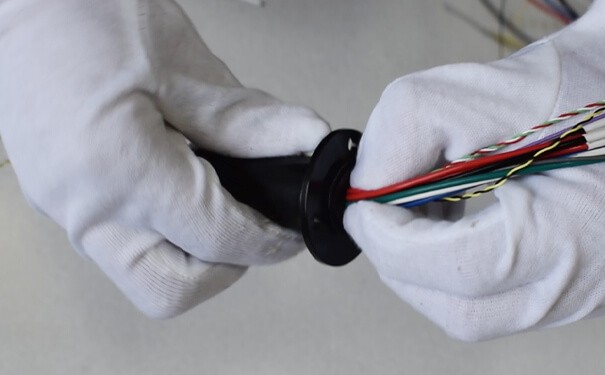Slip ring selection is a process that should be carried out with utmost care and consideration for the purpose for which it would be used as well as other key aspects. Your choice significantly determines the performance of a slip ring. It is, therefore, crucial to select the right type of slip ring if you want to get maximum efficiency from its use.
But how can you identify the best type of slip ring? To help you in your selection, we shall look at three steps that you may take if you want to select the right slip ring that will be highly efficient and long-lasting.
Focus on the aspect of technical information When selecting a slip ring, you must know about some critical technical information. Knowing about the technical requirements of a slip ring will help you determine it is capacity and design conditions. The necessary technical details that you have to take into consideration when selecting a slip ring include the following:
Requirements
Voltage Requirements
The voltage requirements of slip rings have to be considered to effectively ensure the right specification for the rotary and electrical connectors. Choosing a slip ring with the right voltage requirements also helps to limit the occurrence of failures such as crosstalk and shorts.
An ideal slip ring should have a minimum voltage of about 600V. It should also be able to support multiple channels as well as accommodate a finite AC/DC voltage required for single contacts.
Having a broad knowledge of the voltage requirements of a slip ring helps you choose an efficient and cost-effective slip ring to meet your needs.
Current Requirements
When selecting a slip ring, one key aspect that has to be considered is the amperage or current requirement of the application. Having a good knowledge of the required amount of current needed to operate equipment will help you choose the right slip ring that can meet that purpose. A slip ring with a hundred percent rated duty cycle with consideration for current drawn as well as an in-built safety margin will help prevent any damage to your equipment due to a surge in current.

When selecting a slip ring, ensure that it is capable of withstanding a hundred percent overload. Also, make sure that it is designed to operate at rated amperages continuously. When you want to make use of a slip ring with a low rating, the current duty cycle is taken into account. Select a slip ring that will be less susceptible to failure or permanent damage in the case of high current situations.

Revolution Per Minute Requirement
A standard slip ring is usually rated to a value of 2000 revolutions per minute. However, some slip rings have a speed rating that far exceeds this value. By considering the RPM requirement of slip rings, you can be able to know the relevant equipment or application it can be used for. A standard slip ring is designed with electrical connections that can rotate at a speed that is higher than the traditional brush contacts. You may even select a slip ring that provides a cooling medium to help reduce the effect of heat generated during operation.

Requirements for Signal Type and Electrical Frequency
Selecting the right slip ring for your equipment is hinged on the signal type and the electrical frequency requirement. A standard slip ring should be able to accommodate low-level signals and provide support for different types of communication protocols such as Ethernet, LAPNet, Coaxial, Modbus, CAN-Bus, CC-Link, etc.
You may consider buying a slip ring that can effectively support devices with significantly lower signal levels like a thermocouple or RTD (resistive temperature detection) devices without producing skewed or inaccurate results.
Number of Contacts Needed for the Effective Operation
Another important aspect that may influence your selection of slip rings is the number of contacts needed to function properly. Some slip rings provide single contact over a hundred multiple-channel units with several options and sizes. To select the right type of slip ring, there should be a good understanding of the number of signals or channels it comes with.
Get Relevant Information about the Application
Other relevant information, such as operating temperature, mounting, time frame, and quantity requirements, are some of the important information that is needed to help you make the right slip ring selection.
Requirement for Space
A good slip ring should be able to meet your requirements for space. This could be achieved by combining or reducing an assembly’s channel count.
Requirements for Mounting
An ideal slip ring should also be suitable for mounting without stress. When making your selection, ensure that the slip ring is well-configured to meet the mounting needs of an application. It should have mounting options such as shaft and body mount flanges.
Operating Temperatures
The operating temperature of a slip ring is another factor that can help you in your selection. A standard slip ring can operate at temperatures of up to 160°F. Some slip rings are designed with liquid jackets for the purpose of cooling. They also integrate other mechanisms in the rotatory system to prevent overheating.
Time Frame and Quantity Requirements
When selecting a slip ring, your production volume should be considered. It has to meet your current and projected needs and has to be cost-effective and efficient. Select a slip ring that would give you a timely and fast response while accommodating a longer run-time
Accessory Information
An ideal should be easily integrated with other accessories to improve performance and overall efficiency. A standard slip ring may be able to accommodate the following accessories:
FORJ (Fiber Optic Rotary Joints)
As an additional feature, an ideal slip ring should easily integrate a FORJ system into its component to increase functionality.
Rotary Union
For electrical signal or fluid medium applications that require a seamless and free rotation, a slip ring should provide rotary unions in several models, and passage counts.
Encoder
A good slip ring should easily integrate with standard encoder solutions, which are useful in measuring rotation and shaft positions, including rotary fillers, cappers, and indexing turntables.
The factors for selecting the right type of slip ring have been listed above. Ensure that you take these factors into consideration to enable you to choose a slip ring that will be of high performance, durable, and meets your requirement.
Ready to learn more about our slip rings? Complete the form below to get started.
Types of Slip Rings
Slip rings, also known as rotary electrical joints, rotating electrical connectors, collectors, swivels, or electric swivels, are electromechanical devices that allow the transmission of power and electrical signals from a stationary to a rotating structure. Here are some common types of slip rings:
Capsule Slip Rings
- Description: Compact and easy to install, often used in applications where space is limited.
- Applications: CCTV, robotics, medical equipment.
Through Bore Slip Rings
- Description: Feature a hole in the center, allowing for other components (like a shaft) to pass through.
- Applications: Rotary tables, cable reels, medical equipment, packaging machines.
Pancake Slip Rings
- Description: Flat and disk-like, designed for applications where axial space is limited.
- Applications: Military radar systems, test equipment, wind turbines.
Separate Slip Rings
- Description: The rotor and brush block are separate, allowing for customized installations.
- Applications: Any application requiring custom mounting configurations.
High-Current Slip Rings
- Description: Designed to handle high current loads.
- Applications: Welding machines, large industrial equipment.
Miniature Slip Rings
- Description: Small and lightweight, used in applications requiring small size and weight.
- Applications: Drones, small robots, medical devices.
Fiber Optic Slip Rings
- Description: Designed to transmit optical signals.
- Applications: High-speed data transmission, video surveillance systems, fiber optic communication systems.
Ethernet Slip Rings
- Description: Specifically designed to transmit Ethernet signals without interference.
- Applications: Surveillance cameras, robotic arms, automation systems.
Mercury Wetted Slip Rings
- Description: Use mercury to create a low-resistance path for electrical contact.
- Applications: Precision measurement equipment, low-noise applications.
Wind Turbine Slip Rings
- Description: Specialized slip rings designed for the demanding conditions of wind turbines.
- Applications: Wind turbine power generation.
Customized Slip Rings
- Description: Tailored to meet specific customer requirements.
- Applications: Various specialized industrial applications.
Electrical Slip Rings
- Description: General-purpose slip rings for transmitting electrical power and signals.
- Applications: General industrial machinery, cranes, and hoists.
Each type of slip ring has unique features tailored to specific applications and industries, providing solutions for transmitting electrical power and signals in rotating systems.
How to Select Slip Rings
Selecting the appropriate slip ring for your application involves considering several key factors to ensure optimal performance and reliability. Here are the steps and factors to consider:
Understand the Application Requirements
- Electrical Requirements: Determine the number of circuits, voltage, current, and type of signals (power, data, control, etc.) that need to be transmitted.
- Mechanical Requirements: Consider the rotational speed (RPM), operating environment (temperature, humidity, dust, vibration), and available space for the slip ring.
Determine the Type of Slip Ring
- Capsule Slip Rings: Suitable for compact and space-constrained applications.
- Through Bore Slip Rings: Ideal for applications requiring a central hole for a shaft or other components.
- Pancake Slip Rings: Best for applications with limited axial space.
- Miniature Slip Rings: Appropriate for small and lightweight applications.
- Fiber Optic Slip Rings: Required for high-speed data transmission applications.
- High-Current Slip Rings: Needed for applications with high current loads.
Evaluate Electrical Specifications
- Number of Circuits: Ensure the slip ring can accommodate the required number of electrical circuits.
- voltage and Current Ratings: Verify that the slip ring can handle the voltage and current requirements of your application.
- Signal Types: Ensure compatibility with the types of signals (analog, digital, Ethernet, etc.) that will be transmitted.

Consider Mechanical Specifications
- Rotational Speed: Check the maximum RPM rating of the slip ring.
- Size and Weight: Ensure the slip ring fits within the available space and meets any weight constraints.
- Mounting Configuration: Choose a slip ring that can be easily mounted in your specific setup.
Assess Environmental Conditions
- Temperature Range: Ensure the slip ring can operate within the temperature range of your environment.
- Protection Level: Consider IP ratings for dust and water resistance if the slip ring will be used in harsh environments.
- Vibration and Shock: Evaluate the slip ring’s durability in high vibration or shock-prone environments.
Review Maintenance and Longevity
- Maintenance Requirements: Determine the maintenance needs, such as lubrication and Cleaning.
- Service Life: Consider the expected lifespan of the slip ring and any warranties offered.
Customization Options
- Custom Slip Rings: If your application has unique requirements, consider contacting manufacturers for customized solutions.
- Additional Features: Look for additional features like integrated connectors, special materials, or specific mounting options.
Cost and Supplier Support
- Budget: Ensure the selected slip ring fits within your budget while meeting all technical requirements.
- Supplier Support: Choose a reputable supplier that offers good technical support, after-sales service, and warranties.
Steps to Select the Right Slip Ring
- Define Application Parameters:
- List all electrical and mechanical requirements.
- Consider environmental conditions.
- Research Available Options:
- Compare different types of slip rings.
- Shortlist models that meet your criteria.
- Consult with Manufacturers:
- Discuss your specific needs with slip ring manufacturers or suppliers.
- Request technical datasheets and performance specifications.
- Evaluate and Test:
- If possible, test the slip ring in your application to ensure compatibility and performance.
- Consider requesting samples for evaluation.
- Make a Decision:
- Choose the slip ring that best meets your requirements and budget.
- Place an order and arrange for delivery and installation.
By carefully considering these factors and following these steps, you can select the appropriate slip ring for your application, ensuring reliable performance and longevity.
See What We Can Do
